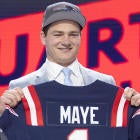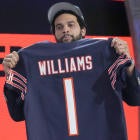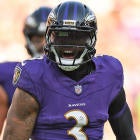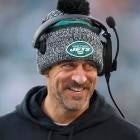 |
| Arkansas and Iowa are using the new Riddell 360 technology. (Riddell.com) |
The prevention of concussions is at the forefront of any football discussion these days. And the folks at Riddell, one of the primary helmet makers in the industry, have created the Riddell 360, a new helmet with the primary goal of improving the health of football players.
The 360 is currently being used by certain teams on the college and pro level right now, and could (should?) certainly become more widespread as the technology becomes more accepted.
The primary piece of technology is a hexagonal liner system inside of the helmet that made up of energy managing materials, which, coupled with strategically-placed face mask hinge clips help to reduce forces from frontal impacts. In terms of reducing concussions, there's not a whole lot more that football players need than the reduction of those impactful blows.
Virginia Tech does a series of helmet ratings, designed to assesses an adult football helmet’s ability to reduce the risk of concussion, and in a recent examination of the 360, the study concluded that the Riddell 360 and other new helmet technology performed best among the helmets they tested. That's in large part to the increase in technology.
“We are pleased that the design and engineering of our helmets has once again been validated by this study," Dan Arment, president of Riddell, said following the study. “We judge our football helmets across many different metrics, and it’s terrific to see that we fared well with Virginia Tech’s rating system. What this study shows is that the football helmet industry is continuing to advance and produce more protective helmets."
The design of the helmet -- which also features additional comfort features like more lightweight technologies for the facemask and shell, as well enhanced locking cradles to keep the helmet from flying off (ahem new college football rule) -- is based off of Riddell's Head Impact Telemetry System (HITS).
HITS assesses around 1.4 million impacts on a helmet and determines the location, magnitude, duration and direction of head impacts and collects that information in order for the company to better process where helmets need the greatest protection.
The systems in place to prevent concussions aren't perfect right now. But it's good news that the folks who design the helmets are out there working to improve the quality of the product that protects the brains of the guys playing football.





















